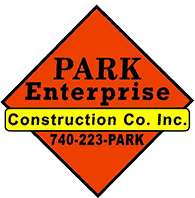There’s a lot that can go wrong with a parking lot - you've probably driven on parking lots with all of the issues listed below. You may have even paid for repairs caused by cavernous potholes. You also probably don't want your visitors to have the same bad experience.
Here are some of the most common parking lot paving issues that can turn your commercial parking lot into a minefield.
6 Asphalt Parking Lot Issues All Property Owners Should Recognize
1. Poor Subgrade
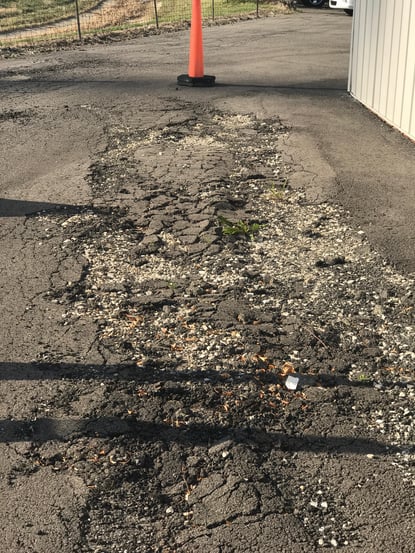
And here’s another ugly example:
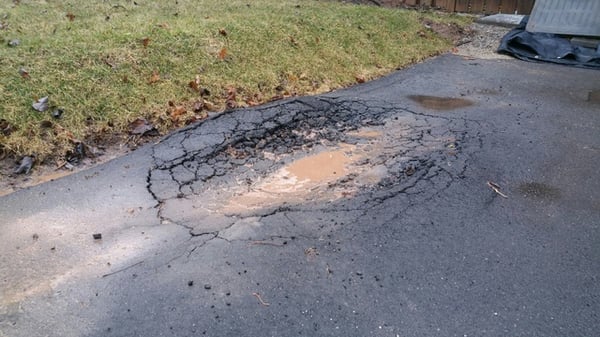
The most important part of your asphalt pavement is a part you’ll (hopefully) never see: the subgrade. The subgrade is a series of layers compacted before the asphalt is laid. This provides:
- Stability and support for new pavement
- A barrier against winter frost, freezing, and thawing that can erode your driving surface from above and below
If not adequately compacted, your parking lot won't have the strength it needs to support the weight of all vehicles using the lot. It also gives a poor first impression for your business.
2. Cooling Too Quickly

This parking lot looks "crunchy" because the asphalt cooled too quickly. Your paver should know how to control asphalt temperature to create a smooth, even surface.
The parking lot above is more likely to retain water and fail more quickly.
3. Poor Joint Construction
Prediction: this parking lot will fail at this joint:

And this one will fail at all of these joint lines:
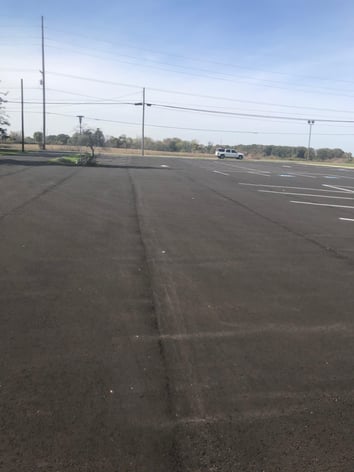
Asphalt is laid in connecting strips or sections called joints. Joint quality is tested as vehicles and nature erode the lot over time. The parking lots shown above will not stand up to the wear of traffic or nature.
Well-constructed joints will be nearly invisible after cooling, and will better handle high volumes of traffic and harsh weather.
4. Poor Planning

Somebody messed up here, and now this street just looks silly. Traffic control should be step #1 before laying asphalt.
Vehicles should be removed from the area and diverted before the project begins. They should remain off the asphalt as it cures for 1-3 days. It may take even longer in warm weather, which keeps keeps the asphalt hot and pliable.
5. Thin Material
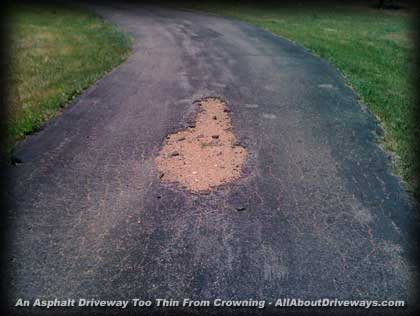
This is common with less reputable contractors. Looking to make a quick buck and hoping you don’t notice, they install a very thin layer of asphalt and charge for a full layer.
At first glance, it may look fine, which is how they get away with it. But a thin overlay will erode much more quickly than a proper layer.
6. Poor Grading (& Poor Finish)
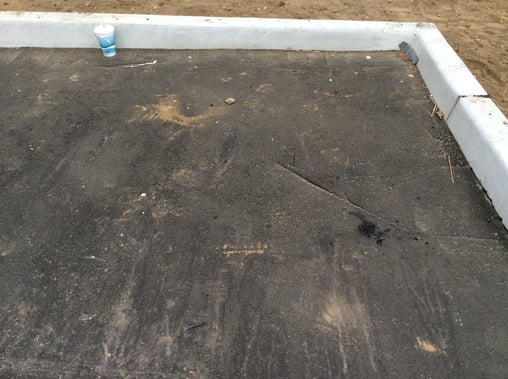
This uneven slant is a result of poor grading. The curb should be a consistent height along the entire perimeter of the parking lot.
Bonus: Notice the disfiguring marks and small holes in the asphalt. This lot is poorly finished.
Take Care of Your Parking Lot!
Most parking lot issues can be avoided or mitigated with proper maintenance and care. The others... well, those require high-quality construction from the get-go.
If your lot is too far gone, you'll probably need to redo it (or at least get an overlay).
Here's what proper paving looks like:
